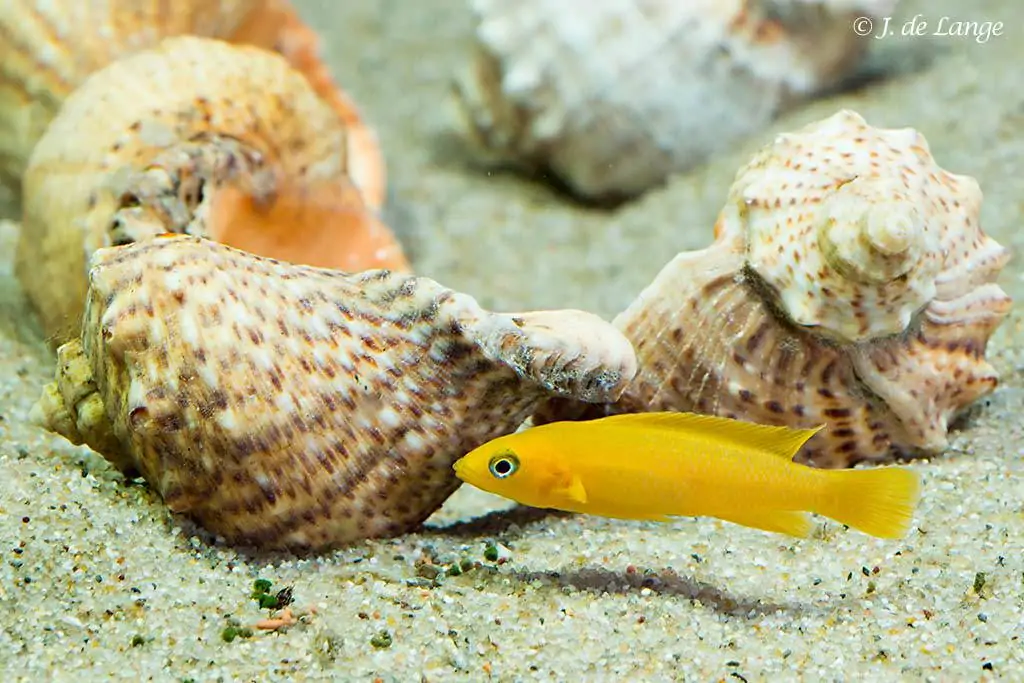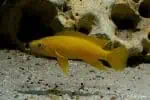Neolamprologus leleupi
The males and females are colored the same. Depending on the origin, they are bright yellow, orange, brown/black, or silver beige. The Bulu-point variant is known for its dark mustache. The dark variants also have a yellow color that is masked by a layer of dark pigment. To prevent yellow fish from turning dark or looking “dirty”, it is best to keep this species on a light surface and feed it with food that brings out the colors. This way the yellow really stays yellow. The males can grow up to 12 centimeters in length, the females remain slightly smaller.
Many synonyms have been used for this species: Lamprologus leleupi, Lamprologus leleupi leleupi, Lamprologus leleupi melas, Neolamprologus leleupi leleupi, Neolamprologus leleupi melas.
Origin
This species only occurs in the northwest of Lake Tanganyika. Depending on the other species present, they occur at depths of 3 to 40 meters.
Diet
In the wild, this predator feeds on small animals on rocks, fish eggs, insects, etc. In the aquarium, it is not a picky eater. They eat almost all types of food without any problems. Preferably give them a varied menu of flake food, cichlid granules, Daphnia, brine shrimp, mysis, cyclops, white and black mosquitoes. The carotene in mysis, cyclops and artemia brings out the colors well, so make sure they are included in the diet.
Character
Like most Tanganyika cichlids, the Neolamprologus leleupi has a fierce character. They hold their own and do not shy away from larger fish. They usually combine well with most other species.
The Aquarium
The aquarium should be furnished with plenty of rocks. The Neolamprologus leleupi makes its territory between the cracks and crevices of the rocks. As mentioned earlier, a light ground cover helps keep this species in good color. As usual in a Tanganyika aquarium, it is best to use light-colored sand.
Breeding Neolamprologus leleupi
Due to the breeding method, you can have fry in the aquarium for years without ever seeing an egg. The female looks for a dark cave in the aquarium where she deposits the eggs against the ceiling. These nests contain between 50 and 250 eggs, but usually, the number is around 100 eggs. If you do see them: the eggs are white in color, so don’t immediately think that they are moldy or no longer good. The female guards the eggs and the male guards the area surrounding the cave.
The eggs hatch after 2 to 4 days. The larvae are collected at the bottom of the cave. After about a week they can swim freely and go out into the wide world. Both parents take turns caring for their young. They stay with their parents until they are almost fully grown. After this, you have to remove them because they will then be seen as competition. Apparently, breeding goes better if a number of young stay with the pair. The parents then have a better relationship and do not have as much time to argue. The young larvae can be fed with crushed flakes or newly hatched brine shrimp.
Video
Author
John de Lange
Copyright images
John de Lange





















Reviews
There are no reviews yet.